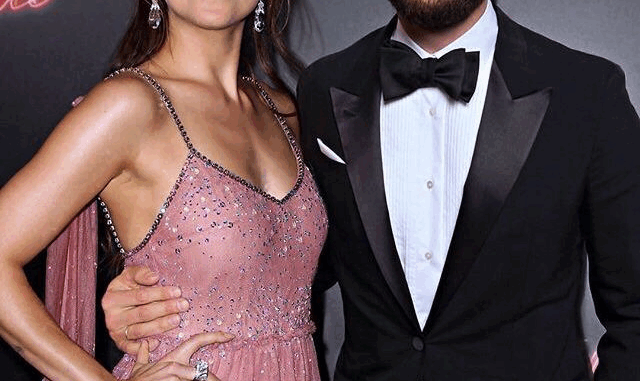
It begins like any other steamy moment in the Fifty Shades franchise — slow, deliberate glances, a trail of fingertips, the careful choreography of seduction. But somewhere in the editing room, a decision was made. A single scene, shot with the same meticulous detail as the rest, was cut from international versions of the film. Not trimmed for pacing. Not altered for continuity. Banned outright.
The whispers about this scene have persisted since the release of Fifty Shades Darker, growing louder with each fan theory. According to people who claim to have worked on post-production, the sequence wasn’t just risqué — it was “psychologically dangerous.” The term itself sounds like an exaggeration, but in an industry where ratings boards draw lines in shadowy, inconsistent ways, the label was enough to trigger a quiet removal from certain markets.
What we know for sure is that the scene was filmed in a lavish set built to mimic a remote European château, complete with candlelit halls and a private library with towering shelves. The lighting was darker than anything else in the trilogy, with deep crimson shadows creeping along the edges of the frame. There were no pop songs, no lingering guitar strums — just silence, heavy breathing, and the creak of leather.
The first point of controversy, according to leaked notes from the editing process, was the intensity of Christian Grey’s dialogue. It reportedly pushed past the boundaries of erotic suggestion and into a psychological dominance that rattled even seasoned crew members. Some claim Jamie Dornan delivered the lines with such realism that the playback felt more like watching a hidden camera recording than a scripted performance.
The second point was the choreography. The trilogy had already flirted with the limits of mainstream cinema, but this scene blurred into territory that, in some countries, could fall under “restricted” or even “prohibited” categories — not for nudity alone, but for the interplay of power, restraint, and emotional manipulation. In at least one market, a test screening audience reportedly reacted with visible discomfort. Two viewers walked out.
Yet in the United States, the scene technically passed initial ratings. The problem came when international distributors began sending the film for classification abroad. In three European countries and one in Asia, the board’s response was swift: remove the sequence entirely. The studio complied, quietly replacing the footage with a shortened transition that simply cut from the château’s exterior to a morning-after shot in Christian’s penthouse. Unless you knew where to look, you’d never suspect a gap.

But fans are nothing if not relentless. Within weeks of release, online sleuths began dissecting trailer footage, behind-the-scenes clips, and promotional stills. One blurry image — Christian in a half-buttoned shirt, standing in front of the château’s library shelves with a faint handprint on his chest — became the center of the storm. It didn’t match any released scene.
What’s more, Dakota Johnson was once asked about the château set in an interview. She hesitated, then laughed and said, “That was… intense. I don’t think everyone saw that part.” It was the only time she ever referred to it. Jamie Dornan, when pressed about the missing moment during a promotional junket, gave a vague shrug and said, “Some things aren’t meant to be seen everywhere.”
The conspiracy theories grew from there. Some claimed the scene was based on a chapter from an early draft of the book that was deemed “too extreme” to publish. Others believed it was an improvisation between Dornan and Johnson that went too far into emotional realism, making it impossible to pass as safe fantasy. A few even suggested it contained subtle political or cultural imagery that would have sparked outrage in certain countries.
The truth? No one on record will confirm the full details. Editors have refused to comment, citing contractual obligations. The director has danced around the subject, praising the actors’ dedication but avoiding any mention of the cut. And Universal Pictures? Completely silent.
What we’re left with is a tantalizing void. Somewhere in a locked vault — perhaps on a hard drive labeled with a nondescript code — there exists a fully shot, fully performed Fifty Shades scene that audiences in certain countries will never experience. Whether it’s truly dangerous or simply too raw for the carefully packaged fantasy the series became, it remains the franchise’s most enduring mystery.
And maybe that’s the point. Because sometimes, in cinema as in life, what you can’t see lingers far longer than what you can.a
